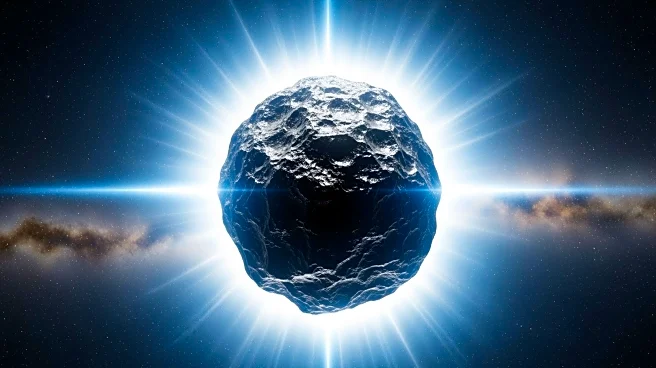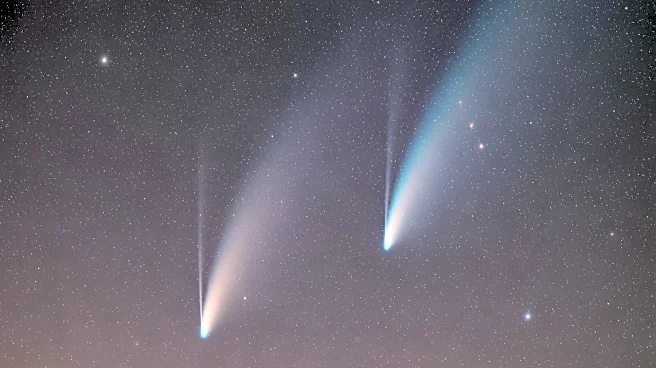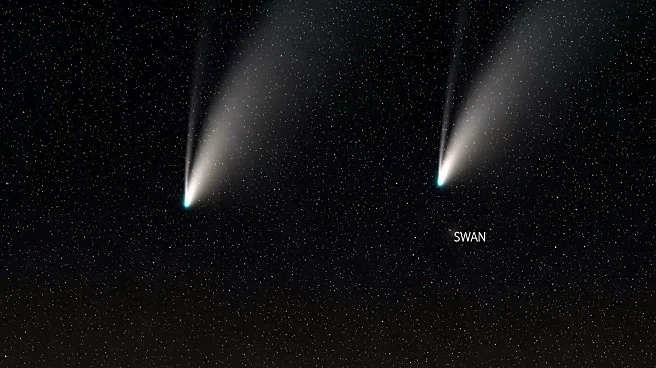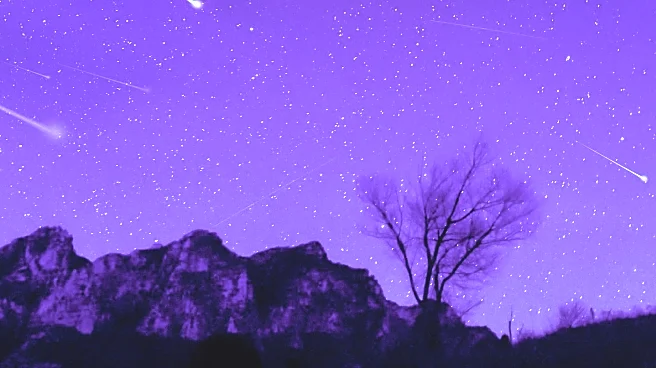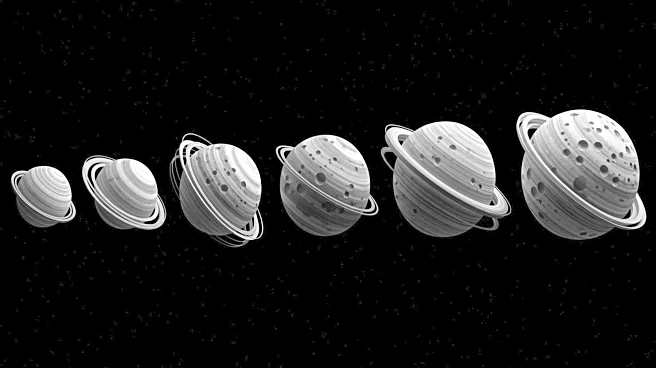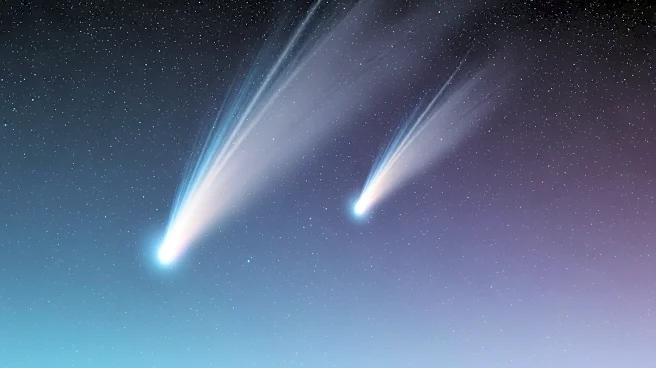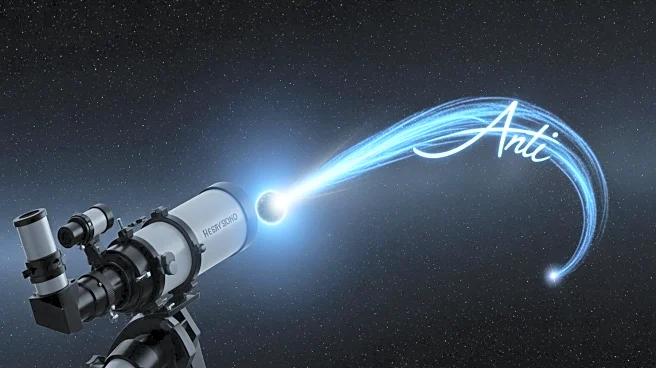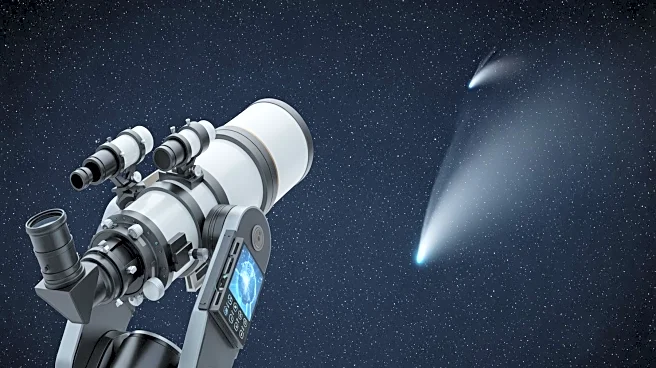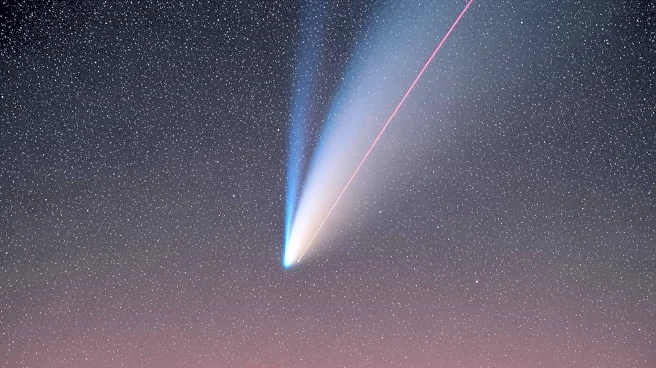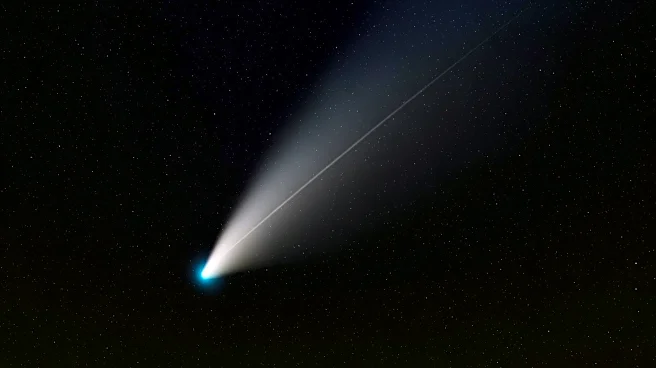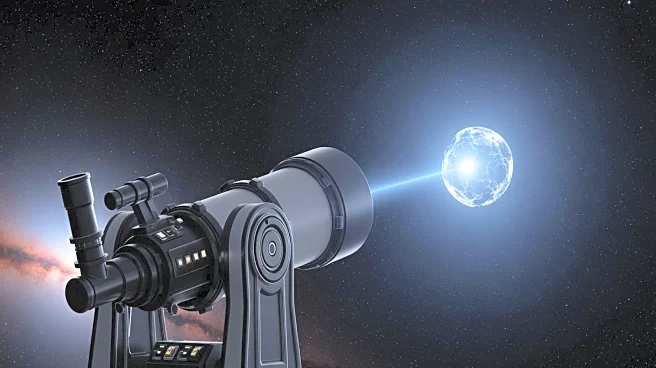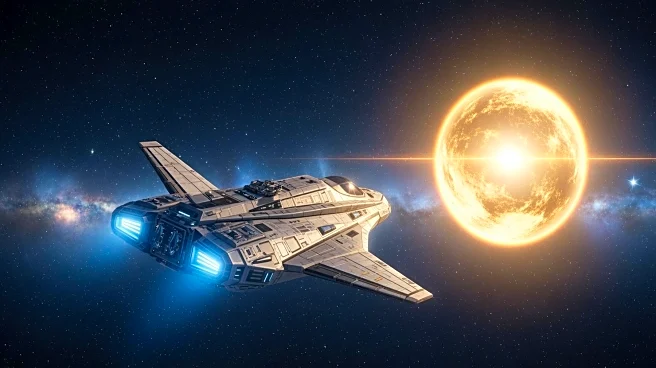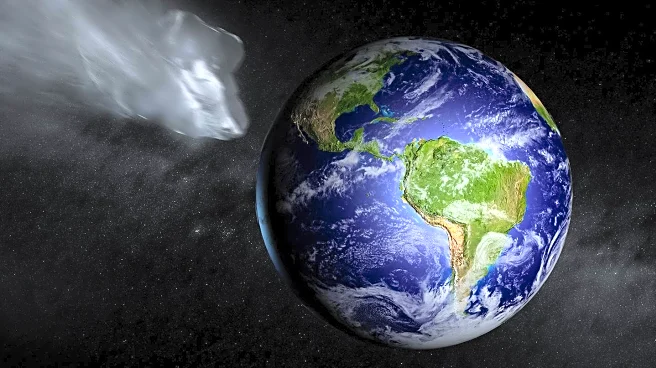What's Happening?
A new asteroid, named 2025 SC79, has been discovered by a scientist at the Carnegie Institute for Science. This asteroid is part of the Atira group, which are near-Earth asteroids with orbits entirely within Earth's orbit. 2025 SC79 is the 39th member
of this group and is notable for its orbit, which is entirely within Venus' orbit and crosses Mercury's orbit. The asteroid completes an orbit around the Sun in just 128 days, making it one of the fastest known asteroids. It was discovered using the Dark Energy Camera on the National Science Foundation's Blanco 4-meter telescope and later confirmed with other telescopes.
Why It's Important?
The discovery of 2025 SC79 is crucial as it highlights the challenges in detecting asteroids that are hidden in the Sun's glare. These 'twilight' asteroids pose a significant risk because they are difficult to observe and could potentially impact Earth. Understanding the characteristics and trajectories of such asteroids is vital for planetary defense strategies. The discovery also contributes to our knowledge of the Solar System's history and the dynamic processes that govern the movement of celestial bodies.
What's Next?
Further observations of 2025 SC79 will be conducted once it reappears from behind the Sun. Scientists aim to study its composition and origins, which could provide insights into how such asteroids are dislodged from the main asteroid belt and captured by the Sun. This research is essential for developing effective strategies to protect Earth from potential asteroid impacts.
